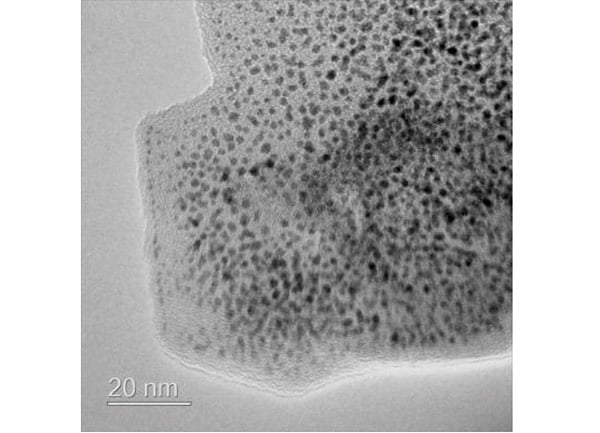Two things have stood in the way of fuel cells being used to power automobiles: the cost of isolating hydrogen, and the complexity of building an infrastructure that would be capable of delivering such hydrogen to the prospective, fuel cell-based automobiles in the first place.
If these two barriers may be overcome, engineers and manufacturers could very quickly realise a way to provide cleaner energy on a widespread commercial scale—with hydrogen fuel cells that can withstand extensive cycling for high-intensity energy applications.
A Perfect Support Material
Now, researchers from Queen Mary University of London (QMUL) and University College London (UCL) claim that they have produced graphene by developing a special, scalable technique and used it to create hydrogen fuel cell catalysts. The collaborating universities also claim that this new type of catalyst is not only far more durable than conventional catalysts, but it is already able to match the performance of their traditional counterparts.
Fuel cells are available now, moreover: already, in fact, platinum is widely used in terms of catalysts for hydrogen fuel cells. However, the high cost and low durability of the metal have prevented the technology’s commercialisation. Previous research has already indicated that graphene could be the perfect support material for hydrogen fuel cells, because of the carbon’s high surface area, high conductivity, and resistance to corrosion.
Dan Brett, UCL’s Electrochemical Engineering professor, said: “We’ve shown that by using graphene instead of the typical amorphous carbon as a support material we can create ultra-durable catalysts”.

A microscopic photo, namely a transmission electron micrograph, of graphene (see grey sheet) decorated with platinum nanoparticles (the dark dots). Image Credit: University College London, via the Royal Society of Chemistry.
Observing and Exploiting the Potential of Hydrogen Fuel Cells
The research study, which was published in the journal Nanoscale, describes the technique used to produce high-quality graphene that is decorated with platinum nanoparticles in a one-pot synthesis. This graphene is then used in the catalyst of a hydrogen fuel cell, the durability of which is confirmed by using accelerated stress tests (as endorsed by the U.S. Department of Energy).
Accelerated stress tests purposely stress the catalyst rapidly, over and over throughout many cycles in a short space of time. When the researchers used such a test, the results showed that—when compared with current commercial catalysts—the loss in activity was around 30% lower than in the researchers’ new graphene-based catalysts.
As PhD student and lead author of the study, Gyen Ming Angel, explains: “[W]e have managed to achieve high durability in both tests and under long testing periods, which is important for the future commercialisation of these materials. We look forward to incorporating our new catalyst into commercial technology and realising the advantages of longer-life fuel cells.”
The joint Queen Mary University of London and UCL team hopes that their research will help to overcome the roadblocks that have so far stood in the way of the clean, renewable, and scalable breakthrough that is hydrogen fuel cell technology.




